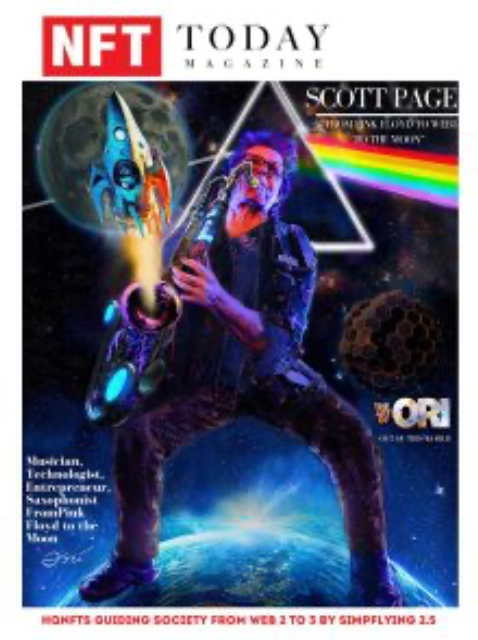Tokenization Megatrends 2024: The Year Blockchain Goes Mainstream
Staff Writer • 2024-11-05
As technology continues to blur the boundaries between traditional finance and digital assets, tokenization has emerged as a game-changing tool, transforming the way we interact with financial products and invest in assets. Bitbond’s latest report, "Tokenization Megatrends 2024," highlights five key trends expected to drive tokenization’s widespread adoption this year. From stablecoins to institutional finance, these trends underscore blockchain’s growing role in the global financial ecosystem. Here’s a closer look at these megatrends and their implications for the future of finance. 1. Stablecoins: Financial Stability Meets Digital Flexibility Stablecoins have established themselves as vital components in the digital finance space, offering stability that traditional cryptocurrencies often lack. Pegged to assets like the U.S. dollar or euro, stablecoins enable fast, cost-effective transactions without the volatility of assets like Bitcoin. With a market cap of over $172 billion, stablecoins are increasingly used for remittances, trading, and as a reliable store of value during turbulent market periods. Tether (USDT) alone accounts for 60% of the stablecoin market, showing its dominance. However, regulatory scrutiny is intensifying, with frameworks like the EU’s MiCA and Singapore’s Payment Services Act aiming to strengthen stablecoin reliability and transparency. As stablecoin adoption grows, their role in cross-border transactions and financial inclusivity will likely expand, making them indispensable tools in the digital economy. 2. Memecoins: The Viral Influence of Digital Assets Memecoins are often viewed as lighthearted or even humorous tokens, with their value driven more by community enthusiasm than intrinsic utility. However, their impact on the crypto landscape has been profound. In 2024, the memecoin market cap stands at $53.4 billion, capturing substantial attention from retail investors and even sparking institutional interest. Leading memecoins like Dogecoin and Shiba Inu rely on internet culture, memes, and social media, creating value through sheer community support. Yet, with risks of security flaws, market manipulation, and regulatory challenges, memecoins remain high-risk assets. For cautious investors, this sector may seem like a fad, but the cultural influence and potential for viral growth make memecoins a fascinating phenomenon. 3. DAOs: Community-Driven Governance Takes Center Stage Decentralized Autonomous Organizations (DAOs) represent a radical shift in governance structures, using blockchain-based smart contracts to enable transparent, community-led decision-making. Unlike traditional organizations, DAOs distribute decision-making power to token holders, facilitating community involvement in everything from funding to operational changes. In 2024, there are over 169,000 DAOs managing assets worth $24 billion, with prominent DAOs like Optimism and Uniswap boasting treasuries exceeding $1 billion. DAOs provide benefits in terms of transparency, resilience, and adaptability, yet they also face challenges like the high costs associated with on-chain governance. As more communities explore DAO structures for collective projects, the model’s versatility and potential to reshape corporate governance make DAOs an exciting, albeit complex, trend. 4. Real-World Assets (RWAs): The Blockchain Link to Tangible Investments The tokenization of real-world assets, or RWAs, is one of the most promising developments in digital finance, bringing assets like real estate, commodities, and private credit to the blockchain. Tokenizing RWAs enhances liquidity, allowing fractional ownership and expanding access to traditionally illiquid assets. With a market value of $12.4 billion, RWAs offer investors new diversification options and transparency, enabling fractional ownership of physical assets. Platforms like Paxos and Ondo Finance are pioneering this space, with tokenized gold and U.S. Treasury products that make investing in physical assets as easy as buying shares. While Ethereum leads in RWA tokenization, other blockchains like Stellar and Polygon are gaining ground. By democratizing asset ownership, RWA tokenization is opening doors for retail investors and providing fresh revenue streams for asset issuers and managers. 5. Institutional Finance: Traditional Finance’s Gradual Blockchain Embrace Institutional finance has been slower to adopt blockchain compared to more consumer-facing sectors, but tokenization in this field is gaining traction. Traditional finance institutions are starting to explore blockchain’s potential for faster, safer, and more cost-efficient transactions. In 2024 alone, over $12.7 billion in tokenized assets was issued by traditional financial players, with notable transactions from Siemens, AIIB, and the World Bank. By tokenizing securities, loans, and bonds, institutional finance is beginning to unlock blockchain’s value. Predictions for 2030 suggest that tokenized assets could reach a $1.9 trillion market cap, spanning assets like mutual funds, commodities, and real estate. This shift is driven by blockchain’s promise of 24/7 settlement, increased liquidity, and reduced counterparty risks—making it an attractive prospect for large financial institutions. Looking Forward: Tokenization’s Transformative Potential Bitbond’s report paints a promising picture of tokenization’s role in reshaping finance. As tokenized assets gain momentum, regulatory developments worldwide—from the EU to Singapore—will play a crucial role in ensuring the security and scalability of these digital innovations. Platforms like Bitbond’s Token Tool make tokenization accessible, offering easy-to-use templates that empower more individuals and institutions to participate in this transformative trend. From providing stability through stablecoins to democratizing asset ownership with RWAs, tokenization is no longer an experimental technology. It is evolving into a core component of the financial landscape, poised to redefine how assets are owned, traded, and managed across the globe. For those interested in the future of finance, tokenization offers a unique vantage point to witness the digital revolution firsthand.
See More Posts
A look at how NFTS, Web 3, Gaming, Cryptocurrencies and Blockchain are reshaping businesses across the globe.
@NFT Today Magazine


